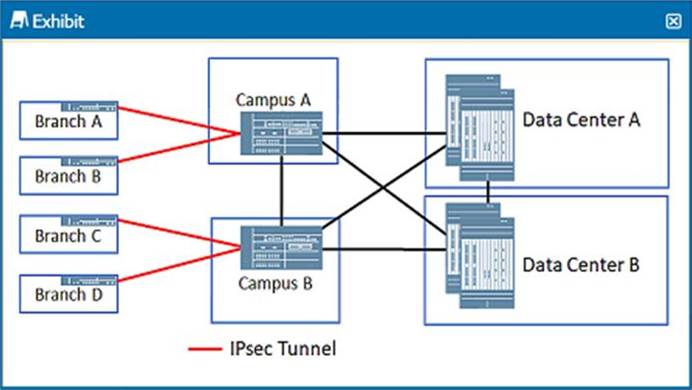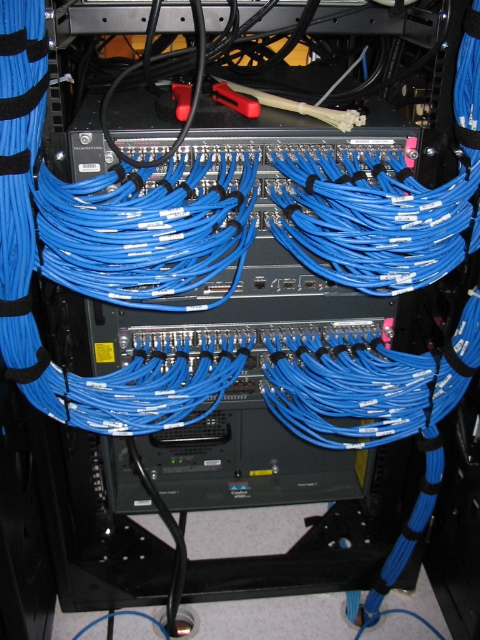1: Which command in OSPF shows the network LSA information?
** The command show ip ospf [process-id area-id] database network displays the
network link-state information.
2: What command would you use to create a totally stubby area?
** The command area area-id stub no-summary will create a totally stubby area.
This is a subcommand to the router ospf process-id command. It is necessary
only on the ABR, but all the other routers in the area must be configured as stub
routers.
3: What is a virtual link, and what command would you use to create it?
** A virtual link is a link that creates a tunnel through an area to the backbone
(Area 0). This allows an area that cannot connect directly to the backbone to do
so virtually. The command to create the link is area area-id virtual-link router-id.
Note that the area-id that is supplied is that of the transit area, and the router-id is
that of the router at the other end of the link. The command needs to be
configured at both ends of the tunnel.

4: Where would you issue the command to summarize IP subnets? State the
command that is used.
** Summarization is done at area boundaries. The command to start
summarization is the area range command, with the syntax area area-id range
address mask. To summarize external routes, use the summary-address
command on the ASBRs.
5: How would you summarize external routes before injecting them into the OSPF domain?
** The command summary-address address mask is the command that you would use.
6: When is a virtual link used?
** A virtual link is used when an area is not directly attached to the backbone area (Area 0). This may be due to poor design and a lack of understanding about the operation of OSPF, or it may be due to a link failure. The most common cause of an area separating from the backbone is link failure, which can also cause the backbone to be segmented. The virtual link is used in these instances
to join the two backbone areas together. Segmented backbone areas might also be the result of two companies merging.
7: Give the command for defining the cost of a default route propagated into an area.
** The command to define the cost of a default route propagated into another
area is area area-id default-cost cost.
8: Give an example of when it would be appropriate to define a default cost.
** It is appropriate to define a default cost for the default route when a stub area
has more than one ABR. This command allows the ABR or exit point for the areato be determined by the network administrator. If this link or the ABR fails, the
other ABR will become the exit point for the area.
9: On which router is the area default cost defined?
** The default cost for the default route is defined on the ABR. The ABR will then
automatically generate and advertise the route cost along with the default route.
10: Give the command to configure a stub area and state on which router it is
configured.
** The command syntax to configure a stub area is area area-id stub. This
command is configured on the ABR connecting to the area and on all the routers
within the area. Once the configuration is completed, the Hellos are generated
with the E bit set to 0. All routers in the area will only form adjacencies with other
routers that have the E bit set.
11: What is the purpose of the area range command, and why is it configured on the ABR?
** The area range command is configured on an ABR because it dictates the
networks that will be advertised out of the area. It is used to consolidate and
summarize the routes at an area boundary.
12: Give the commands to configure a router to place subnets 144.111.248.0 through to 144.111.255.0 in Area 1 and to put all other interfaces into Area 0.
** The commands are as follows:
network 144.111.248.0 0.0.7.255 area 1
network 0.0.0.0 255.255.255.255 area 0
13: Give the syntax to summarize the subnets 144.111.248.0 to 144.111.254.255 into another autonomous system.
** The syntax is as follows:
summary-address 144.111.248.0 255.255.248.0
14: Explain briefly the difference between the area range command and the summary-address command.
** The area range command is used to summarize networks between areas and
is configured on the ABR. The summary-address command is used to
summarize networks between autonomous systems and is configured on the
ASBR.
15: Explain the following syntax and what it will achieve: area 1 stub nosummary.
**
The command area 1 stub no-summary creates a totally stubby area.
The number after the word area indicates the area that is being defined as a totally stubby area.
This is necessary because the router might be an ABR with connections to many areas.
Once this command is issued, it prevents summarized and external routes from being propagated by the ABR into the area.
To reach the networks and hosts outside the area, routers must use the default route advertised by the ABR into the area.
16: Why would you configure the routing process to log adjacency changes as opposed to turning on debug for the same trigger?
** The reason to configure the router process to log adjacency
changes to syslog as opposed to running debug is an issue of resources.
It takes fewer router and administrator resources to report on a change of state as it happens than to have the debugger running constantly. The debug process has the highest priority and thus everything waits for it.
17: Give some of the common reasons that neighbors fail to form an adjacency.
** Many OSPF problems stem from adjacency problems that propagate
throughout the network. Many problems are often traced back to neighbor
discrepancies.
If a router configured for OSPF routing is not seeing an OSPF neighbor on an
attached network, do the following:
– Make sure that both routers are configured with the same IP mask, MTU,
Interface Hello timer, OSPF Hello interval, and OSPF dead interval.
– Make sure that both neighbors are part of the same area and area type.
– Use the debug and show commands to trace the problem.
18: When configuring a virtual link, which routers are configured?
** The configuration is between the ABRs, where one of the ABRs resides in
Area 0 and the other in the area that is disconnected from the backbone. Both of
the ABRs are also members of the transit area. Having created the virtual link,
both ABRs are now members of Area 0, the disconnected area, and the transit
area.
19: What does the command area 1 default-cost 15 achieve?
** The command area 1 default-cost 15 will assign a cost of 15 to the default
route that is to be propagated into the stub area. This command is configured on
the ABR attached to the stub area.
20: Explain what is placed in the parameters area-id and router-id for the
command area area-id virtual-link router-id.
** The parameter area-id is the area ID of the transit area. So if the ABR in Area
0 is creating a virtual link with the ABR in Area 3 through Area 2, the area ID
stated in the command is Area 2. The router ID is the router ID of the router with
whom the link is to be formed and a neighbor relationship and adjacency
established.



